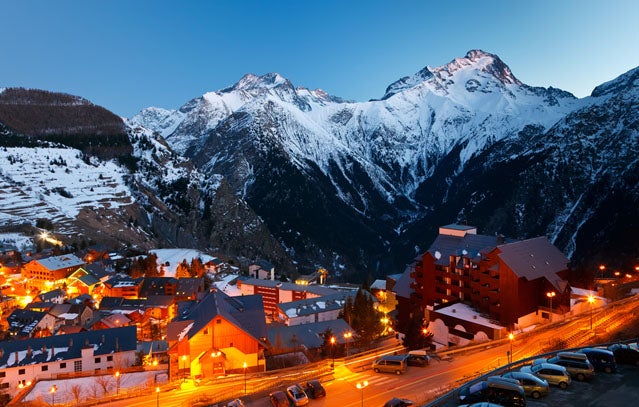
The Golden Eagle Award is not, as it sounds, an accolade for Boy Scouts. It's an accolade for ski areas that give a hoot, so to speak, and are actively reducing their environmental impacts. The this week named its three 2012 Golden Eagle Award winners: Colorado's , Washington's and Maine's , in the large, medium and small ski area categories, respectively.
Aspen Skiing Company, led by VP of sustainability Auden Schendler, has been breaking trail toward more sustainable ski resort operations for years, so it's not surprising to see it top the large ski resort category with its plans to harvest waste methane from Elk Creek coal mine in Somerset, Colorado. (It is a bit surprising that the resort won for a project that hasn't actually happened yet, but the project will begin this summer.)
The ambitious plan will generate 25 million kilowatt hours of energy, which is roughly the amount of energy the Aspen Skiing Co. consumes annually (the power will be fed into the energy grid, not used directly at the resorts). It promises to pack a major punch in terms of emissions reductions, since methane is such a damaging greenhouse gas. “This project will be triple carbon negative,” Schendler explained to me, “because we're not just dislacing coal, but we're reducing methane.” The amount of emissions to be eliminated—96,465 tons of CO2 equivalent every year—is three times the carbon footprint of the resort. Vessels Coal Gas, Inc. is developing the project, with the resort's capital.

Elk Creek coal mine. Photo: Aspen Skiing Co.
Stevens Pass (disclosure: I'm a former employee) earned the award for its efforts to reduce greenhouse gas emissions through purchasing renewable energy credits and other carbon offset mechanisms. These efforts, which offset all of its electricity and propane consumption, have funded 21 million kilowatt hours of wind energy.
But the ski area doesn't rely on offsetting alone. “We don’t count offsetting as a reduction of our own carbon footprint,” says Ross Freeman, the resort's sustainability manager, “because that’s the easy way out.” Instead, Stevens Pass has also made energy efficiency improvements that have cut 40 tons of CO2 emissions each year and has plans to more than double that reduction, through more building and operational retrofits. Using four-stroke snowmobiles has cut on-hill pollution and the resort plans to use more fuel-efficient snowcats this coming winter. It also hosts two electric charging stations to encourage the use of electric vehicles.
Last summer, a fire at Mt. Abram, a four-lift ski area outside Bethel, Maine, destroyed part of its base lodge. As it began to rebuild, it installed a wood pellet boiler to heat its temperorary lodge. It will use the same system for heating the permanent base lodge, replacing the oil boiler it lost in the fire, and it is installing two pellet stoves, one to replace the propane heater in its top lift shack.
The upshot? Aside from having moved to a renewable, locally produced energy resource, the ski area will reduce its greenhouse gas emissions by 166 tons annually. Plus, the pellet ash can be used as compost feedstock. The ski area has also invested in low-energy snowmaking machines and offers a $75 per carload deal on Fridays, to encourage carpooling.
Runners up for the award were Grand Targhee Resort (Wyoming) and Homewood Mountain Resort (California) in the small category, Alta Resort (Utah) and Crested Butte Mountain Resort (Colorado) in the medium contest, and Park City (Utah) and Vail Resorts (Colorado) for the large resort category.
The NSAA also awarded grants to six ski areas under its Sustainable Slopes program, which helps resorts fund specific energy-savings projects. Beaver Valley Ski Club in Ontario, Burke Mountain (Vermont), Canyons Resort (Utah), Mt. Hood Meadows (Oregon), Spirit Mountain (Minnesota), and Telluride Ski and Golf Resort (Colorado) are the grant recipients. The grants are earmarked for projects ranging from installing a solar array to power a ski patrol shack to upgrading to energy-efficient lighting inside resort buildings.
—Mary Catherine O'Connor